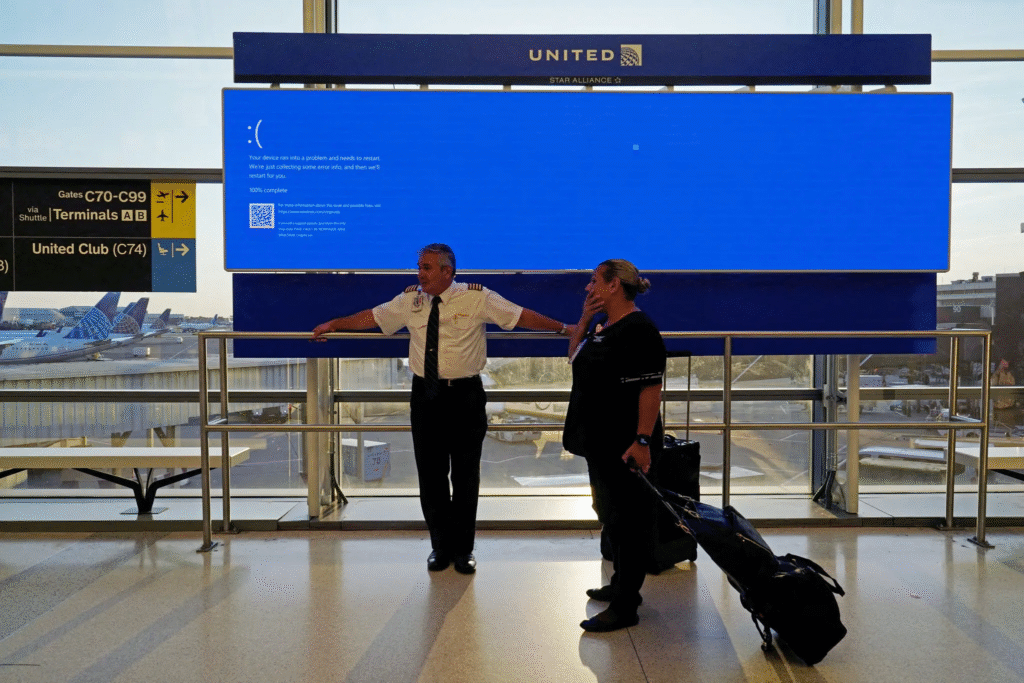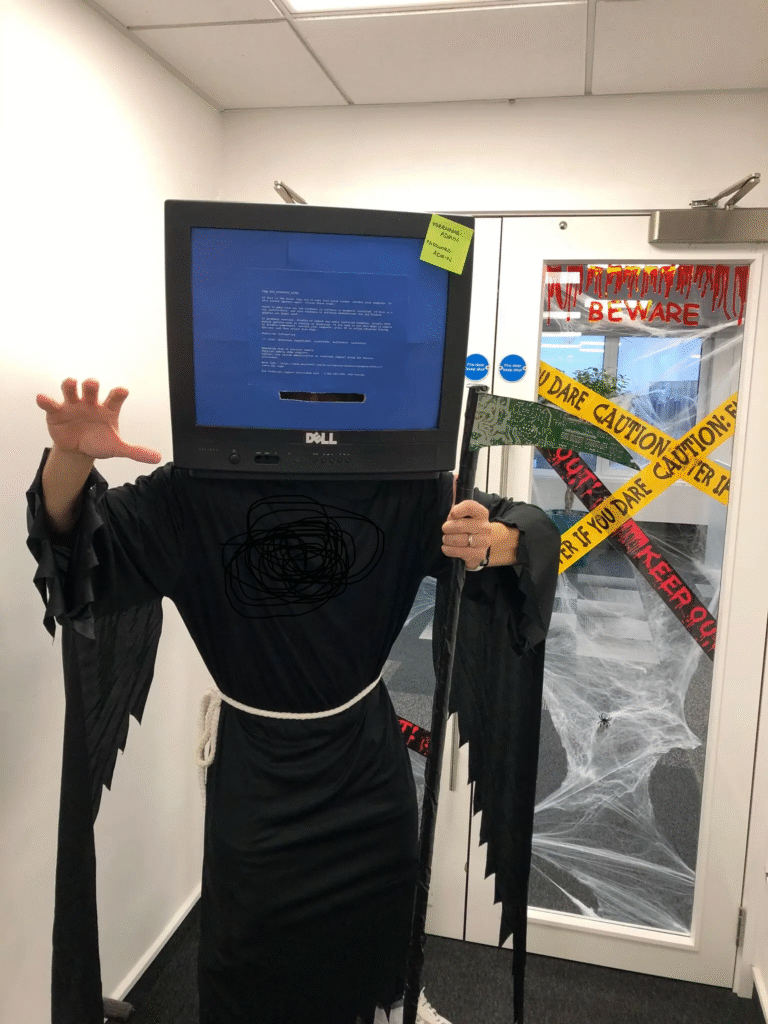🙁 The ‘Blue Screen of Death’ from Microsoft Is Disappearing
The Microsoft black screen is replacing the blue screen, which has been a source of anxiety for computer users for over three decades.
Blue can be an important hue for millennials. It is connected to signs left in our childhood by a nice dog. or the infuriatingly complete breakdown of the Windows machine in front of us. Or songs about a small man who lives in a blue world (Da Ba Dee Da Ba Di).
The Blue Screen of Death, to put it simply.

Microsoft declared on Thursday that the screen was being formally replaced by a less pleasant but more effective Black Screen of Death, signaling the end of the world’s most dreaded and well-known error message of a generation.
Microsoft stated in a blog post that the simpler screen will be released later this summer with improved readability and aligning with Windows 11 design principles while preserving the technical information on the screen. Your device ran into a problem and needs to restart, the new message will read in white letters.
A blue screen has been used by Windows for over 30 years to signal a significant slowdown or failure in its system. Raymond Chen, a longtime Microsoft programmer, claimed that the former chief executive, Steve Ballmer, penned an early version of the message. In the early 1990s, the message “This Windows application has stopped responding to the system” would appear on the screen. Several calming choices were offered over the blue-screen backdrop, including ESC, and ENTER, which would give you the mistaken expectation that the issue could be resolved, followed by the last resort of “CTRL+ALT+DEL” to give up and start again.
Shortly thereafter, an engineer named John Vert created one for Windows NT, and in 1995, Mr. Chen assisted in completing a new one for Windows 95. Mr. Chen stated in a blog piece that they were all blue by coincidence.
Last year’s outage brought on by the cybersecurity business CrowdStrike caused the switch to a black screen. Its software update inadvertently rendered computers running Windows software worldwide useless, resulting in service interruptions for retail establishments, airlines, and emergency response systems.
“I love the Blue Screen of Death. It means a lot to me. The fact that it is blue and has a bit of humor to it makes it calming, according to Jake Moore, a cybersecurity consultant for the European-based firm ESET.
For most of his 43 years, Mr. Moore was raised with the blue screen. He even dressed up as the screen for an office Halloween party. The picture, which is frequently memed in connection to something that has gone wrong, has turned into a pop culture phenomenon in and of itself. In the past, Apple has made fun of it. As Bill Gates and his assistant, Chris Capossela, were unveiling the new Windows 98 at a trade show in 1998, the blue screen famously—or infamously, depending on if you were employed at Microsoft at the time—flashed.
However Moore claimed that the blue screen may have stayed longer than necessary following the CrowdStrike affair.
“The outage has become so synonymous with the millions of blue screens of death that it caused worldwide, which I think may have created a time for change,” Mr. Moore said.

The switch from a blue to a black screen is creating a unique kind of nostalgia: the desire for a reminder of the bad old days.
“I like Microsoft products. They’ve been good to me, and I have no issues with them,” said Brian Konkel, an information technology specialist. However, I’ve been frightened and terrified countless times when a customer calls and says, “I have the Blue Screen Of Death.” It simply rekindles a lot of pleasant and humorous memories of unadulterated fear.
In a career that started just before the blue screen’s debut, Mr. Konkel, 58, managed IT initiatives for the Department of Agriculture and the Federal Aviation Administration. Losing the blue screen, he argued, was similar to society moving on from cassettes and CDs. However, it is especially important to move on from the blue screen in particular since artificial intelligence has grown in importance.
Sometimes having a Blue Screen Of Death appear to remind you that this thing isn’t human isn’t always bad, Konkel stated. It’s actually something we created and we are still somehow in control.
According to Microsoft, the dark screen indicates that brighter days are on the horizon. In its blog entry, the business stated that it will be “easier than ever to handle unforeseen restarts and recover faster.”
“This is really an attempt on clarity and providing better information,” David Weston, a Microsoft vice president for enterprise and operating system security, told The Verge this week, adding that the business hopes to provide faster remedies to computer issues.
Although consumers may have a better experience, not everyone is prepared to say goodbye.
I’ve learned so much from experimenting with hardware, making errors, and figuring out what caused the Blue Screen Of Death, Mr. Moore said. It made me want to improve.” It will be a pity to see it vanish. It may not signify a great deal to others. They might not even see or be aware of any difference. But in my view, it marks the conclusion of an era.




























